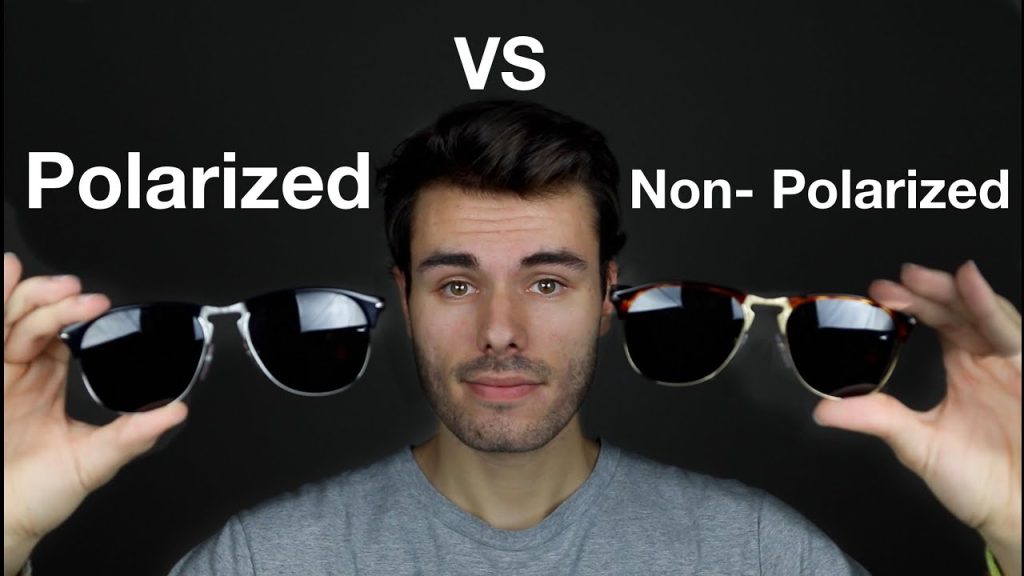Blog
Polarized vs. Non-Polarized Sunglasses: What’s the Difference?
Sunglasses are more than just a fashion accessory; they serve a crucial role in protecting our eyes from harmful UV rays and enhancing our vision in bright conditions. Among the various types of sunglasses available, polarized and non-polarized options stand out for their distinct features and benefits. This article will delve into the differences between polarized and non-polarized sunglasses, helping you make an informed choice for your eye protection needs.
Understanding Sunglasses
Before we dive into the specifics of polarized and non-polarized sunglasses, it’s essential to understand what sunglasses do. Sunglasses primarily protect our eyes from:
- UV Radiation: Ultraviolet rays from the sun can cause serious eye problems, including cataracts and macular degeneration.
- Glare: Bright sunlight reflecting off surfaces like water, roads, or snow can create glare, making it difficult to see clearly.
- Comfort: Sunglasses reduce brightness, making outdoor activities more enjoyable.
The Basics of Polarized Sunglasses
Polarized sunglasses are designed with a special coating that reduces glare from reflective surfaces. This feature makes them particularly beneficial for activities such as fishing, skiing, and driving. Here’s how they work:
- Polarization Filter: The lenses contain a polarizing filter that blocks certain light waves. This filter allows only vertical light waves to pass through, effectively reducing glare from horizontal surfaces.
- Enhanced Clarity: By minimizing glare, polarized lenses provide sharper vision and improved contrast, which can enhance your overall visual experience.
The Basics of Non-Polarized Sunglasses
Non-polarized sunglasses, on the other hand, do not have this special coating. They are designed primarily to block UV rays and reduce brightness but do not specifically address glare. Here are some key points:
- UV Protection: Non-polarized sunglasses can still offer significant UV protection, which is crucial for eye health.
- Affordability: Typically, non-polarized sunglasses are more affordable than their polarized counterparts, making them a popular choice for everyday wear.
- Versatility: While they might not excel in reducing glare, non-polarized sunglasses are suitable for various activities and can be found in numerous styles and designs.
Key Differences Between Polarized and Non-Polarized Sunglasses

1. Glare Reduction
One of the most significant differences between polarized and non-polarized sunglasses is their ability to reduce glare.
- Polarized Sunglasses: These lenses are specifically designed to minimize glare from reflective surfaces, making them ideal for outdoor activities where glare is prevalent.
- Non-Polarized Sunglasses: While they can reduce brightness, they do not effectively eliminate glare, which can be a disadvantage in certain situations.
2. Visual Clarity
The clarity of vision provided by sunglasses is crucial for safety and comfort.
- Polarized Sunglasses: The reduction of glare leads to enhanced clarity and contrast, allowing you to see more details in your surroundings.
- Non-Polarized Sunglasses: While they offer decent visibility, they may not provide the same level of clarity as polarized lenses, especially in bright conditions.
3. Eye Strain
Prolonged exposure to bright light can lead to eye strain and discomfort.
- Polarized Sunglasses: By reducing glare, polarized lenses can help prevent eye strain, making them more comfortable for extended wear.
- Non-Polarized Sunglasses: They may not alleviate eye strain as effectively, especially in very bright environments.
4. Cost
Cost is often a deciding factor when choosing sunglasses.
- Polarized Sunglasses: Generally more expensive due to the advanced technology involved in their production.
- Non-Polarized Sunglasses: Typically more affordable, making them accessible to a broader audience.
5. Usage Scenarios
Different activities may call for different types of sunglasses.
- Polarized Sunglasses: Best suited for activities such as:
- Fishing: Reduces glare from water surfaces, allowing you to see beneath the surface.
- Driving: Minimizes glare from the road, enhancing safety.
- Skiing and Snowboarding: Reduces glare from snow, improving visibility on the slopes.
- Non-Polarized Sunglasses: Suitable for:
- Casual Wear: Great for everyday use and social outings.
- Indoor Use: Ideal for environments with bright lighting but less glare.
Benefits of Polarized Sunglasses
Polarized sunglasses offer several advantages that make them a preferred choice for many outdoor enthusiasts:
1. Improved Safety
By reducing glare, polarized sunglasses enhance visibility and reduce the risk of accidents, particularly while driving or engaging in water sports.
2. Enhanced Comfort
The reduction of glare leads to a more comfortable experience in bright conditions, allowing you to enjoy outdoor activities without squinting.
3. Better Color Perception
Polarized lenses can enhance the vibrancy of colors, making landscapes appear more vivid and enjoyable.
4. Reduced Eye Fatigue
With less strain on the eyes due to glare reduction, polarized sunglasses can help prevent fatigue during prolonged outdoor activities.
Benefits of Non-Polarized Sunglasses
While they may lack the advanced glare-reducing features of polarized lenses, non-polarized sunglasses still provide several benefits:
1. UV Protection
Many non-polarized sunglasses offer excellent UV protection, safeguarding your eyes from harmful rays.
2. Affordability
Non-polarized sunglasses are generally more budget-friendly, making them an attractive option for those who need basic eye protection without breaking the bank.
3. Variety of Styles
With a wide range of designs and colors, non-polarized sunglasses can suit various fashion preferences and occasions.
Choosing the Right Sunglasses for You
When deciding between polarized and non-polarized sunglasses, consider the following factors:
1. Activities
Think about how you plan to use your sunglasses. If you engage in activities with significant glare, such as fishing or skiing, polarized sunglasses may be the better choice. For casual wear or indoor use, non-polarized sunglasses may suffice.

2. Budget
Determine your budget for sunglasses. If you’re looking for a more affordable option, non-polarized sunglasses may be the way to go. However, investing in polarized sunglasses can be worthwhile if you prioritize glare reduction and visual clarity.
3. Style and Comfort
Consider your personal style and comfort preferences. Both polarized and non-polarized sunglasses come in various styles, so choose a pair that fits well and complements your look.
Conclusion
In summary, both polarized and non-polarized sunglasses serve essential functions in protecting your eyes and enhancing your visual experience. Polarized sunglasses excel in reducing glare and improving clarity, making them ideal for outdoor activities. Non-polarized sunglasses, while lacking in glare reduction, still provide adequate UV protection and are often more affordable.
Ultimately, the choice between polarized and non-polarized sunglasses depends on your specific needs, activities, and budget. By understanding the differences and benefits of each type, you can make an informed decision that best suits your lifestyle. Whether you’re hitting the beach, driving on a sunny day, or simply enjoying a stroll outdoors, the right pair of sunglasses can make all the difference in your comfort and eye health.


